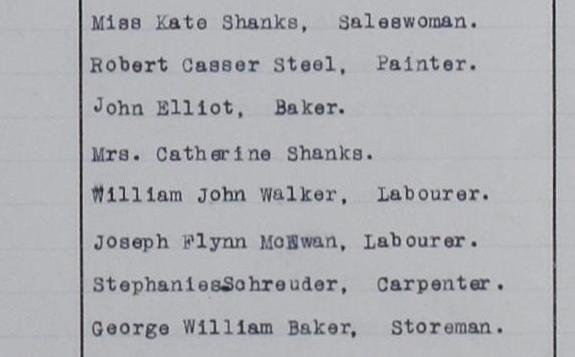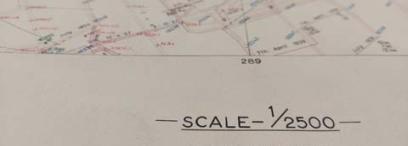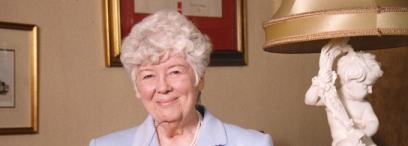In the course of preparing and checking millions of index entries and linking them to images, staff at National Records of Scotland sometimes come across members of their own family in the records. Whilst working with Valuation Rolls on a recent project, three members of the team discovered answers to puzzles in their own family history. Here are their stories.
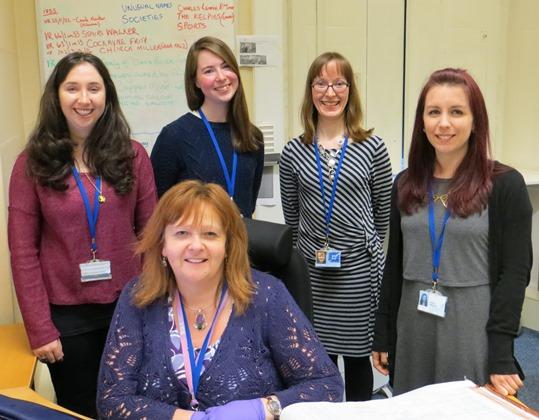
The Valuation Rolls team: Rhona Jamieson, Maureen McIntyre, Veronica Schreuder, Tessa Spencer and Sophie Volker
The ploughman and the maharaja
Maureen McIntyre
The Valuation Rolls helped me solve a mystery in my family tree. William Fernie was born in 1826 in Falkland, Fife and is my first cousin six times removed. His wife was Jessie Menzies and they had three children. Margaret was born in 1848 and James in 1852. Both forenames had appeared in the family before, but it was the forename of their third son that was unusual. Duleep Fernie was born on the 7th August 1856 at Castle Menzies Lodge in Weem, Perthshire. Duleep married in 1881 and his name is recorded on the marriage certificate as Dhuleep S Fernie, and on his second marriage in 1889 as Dhuleep Singh Fernie. I was intrigued as to where a ploughman’s family, who had lived in Scotland all their lives, had heard the name Duleep and why they would choose to call their son this unusual and far-from-Scottish name.
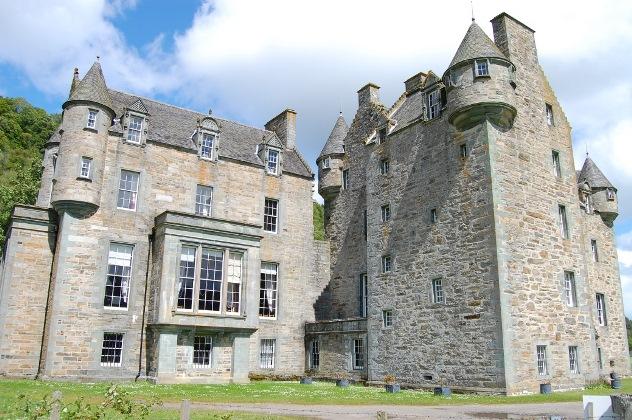
Castle Menzies in 2014
Image courtesy of Maureen McIntyre
I knew that the family lived and worked at Castle Menzies in 1855 but I could find no trace of William Fernie in the Valuation Rolls. The roll only details those whose properties had a rental value over £4 a year, so this told me that as a ploughman his rent was under this figure. However, my search of the roll for Castle Menzies helped to solve the mystery! Castle Menzies and gardens were owned by Sir Robert Menzies and in 1855 the tenant of the castle is listed as His Highness the Maharaja Duleep Singh.
The Maharaja Duleep Singh is a fascinating historical character who was born in 1838 in the Punjab and was a prominent figure in the Sikh Empire. Exiled to Britain at the age of 15, he became great friends with Queen Victoria. He lived in Scotland for many years and was known for his lavish lifestyle and could often be seen in Highland dress. He became known as ‘the Black Prince of Perthshire’.
Throughout his adult life Duleep Fernie lived at various addresses in London and died in 1935 at the age of 78. His occupation is listed as ‘of Independent Means’. Now I have another mystery to solve – how did a ploughman’s son from Perthshire move to London before the age of 25 and become such an independently wealthy man! Did he have help from and use the connections of his namesake?
A farm with two names
Rhona Pollock Jamieson
Alexander Frew Pollock, my great grandfather, was born in Hamilton, South Lanarkshire on 13th April 1877. After leaving school he became a dairyman, travelling around the local area selling milk from his horse and cart. In 1907 he married a girl named Mary Berrie Donaldson and they set up home on a farm located on the outskirts of Glassford village, only seven miles from his home town. He would remain there until his death on 27th June 1938, aged 61, leaving behind his wife and six of their seven children.
Whilst searching the 1925 Valuation Rolls for Lanarkshire, I was delighted to find information relating to Alexander, who is listed as the proprietor of Pennyland Farm (National Records of Scotland ref VR107/407/141). I was surprised by this discovery, as on Alexander’s death certificate the farm is recorded as Bellaton Farm. This inconsistency intrigued me and after questioning Alexander’s only surviving child, my great-aunt Charlotte, I discovered that originally, on the title deeds, the farm had the name of Pennyland but this had been changed unofficially sometime prior to 1907; hence the use of the different names on the Valuation Rolls and the Statutory Records. Further inspection of earlier Valuation Rolls revealed that even as early as 1865, the farm was named Pennyland. I discovered this by simply searching the farm names that I knew of and was even able to discover that a Mr Ross had owned the farm previously.
Pennyland, although no longer owned by the Pollocks, remains a larger part of my family's history. The Valuation Rolls have given me an insight into the history of the farm that otherwise would have been difficult to piece together.

Valuation Rolls, National Records of Scotland, VR107/407/141
A Dutchman turned Scot
Veronica Schreuder
Stephanus Gysbertus Schreuder, my great-grandfather, was born in Dordrecht, Holland, on 27th December 1887. He arrived in Britain just before the outbreak of the First World War through his work as a carpenter in the merchant navy. Stephanus had been employed as a carpenter since 1903, aged 16, and served with the merchant navy until August 1922 when he became self-employed. When he was 28 years old, on 13th December 1916, he married Euphemia Shiels Young in Leith.
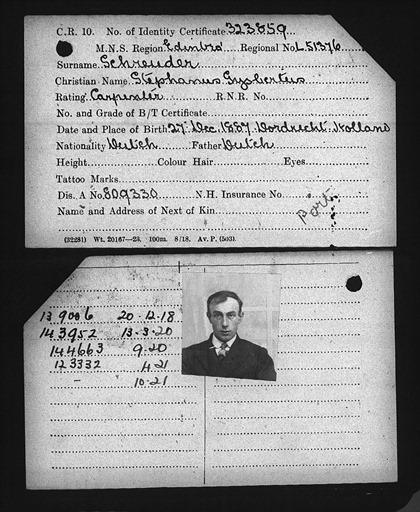
Leith, which in 1920 merged with Edinburgh, was to be the area where Stephanus would spend his life, and, indeed, it was in this district that I found him living in the 1925 Valuation Roll. I found an entry listing him as living at 3 Wilkie Place, Leith, occupation: carpenter (National Records of Scotland ref VR100/507/50). Interestingly, as is sometimes the case with an unusual name, his forename had been spelt incorrectly. Here it was listed as Stephanies, not Stephanus. An important point to remember when searching for someone in any record is that names may have been misunderstood at the time they were written down or wrongly copied later on. And with a surname such as Schreuder, it is always best to assume this may have happened!
The Valuation Roll was a useful and interesting source of genealogical information, covering a period not yet unlocked through the post-1911 censuses. It provided me with a glimpse of an area of my ancestor’s life that I would not be able to easily discover otherwise. Within the roll I learnt where Stephanus lived during this period of his life and approximately how much rent he paid per year (£12 1s). Wilkie Place, near Constitution Street, no longer exists, but it was in an area of Edinburgh filled with working class men such as my great-grandfather; men working with their hands as blacksmiths or iron moulders, and I felt a sense that he had settled well after his journey from Holland. The roll also confirmed that he was still employed in the carpenter trade; even today my dad still has the original tools Stephanus used in his work. All of these small details allowed me to piece together a clearer image of his life nearly 100 years ago.
Stephanus later moved to Madeira Street, Leith, and had a large family of eight children. He retired in the early 1950s and lived until 1970 aged 82.
